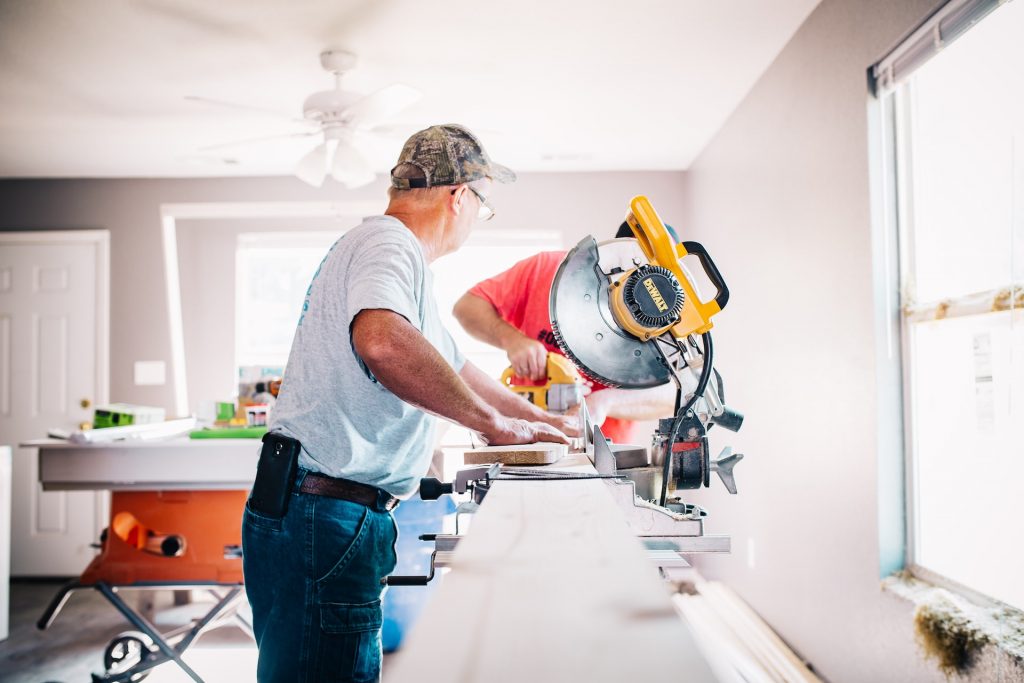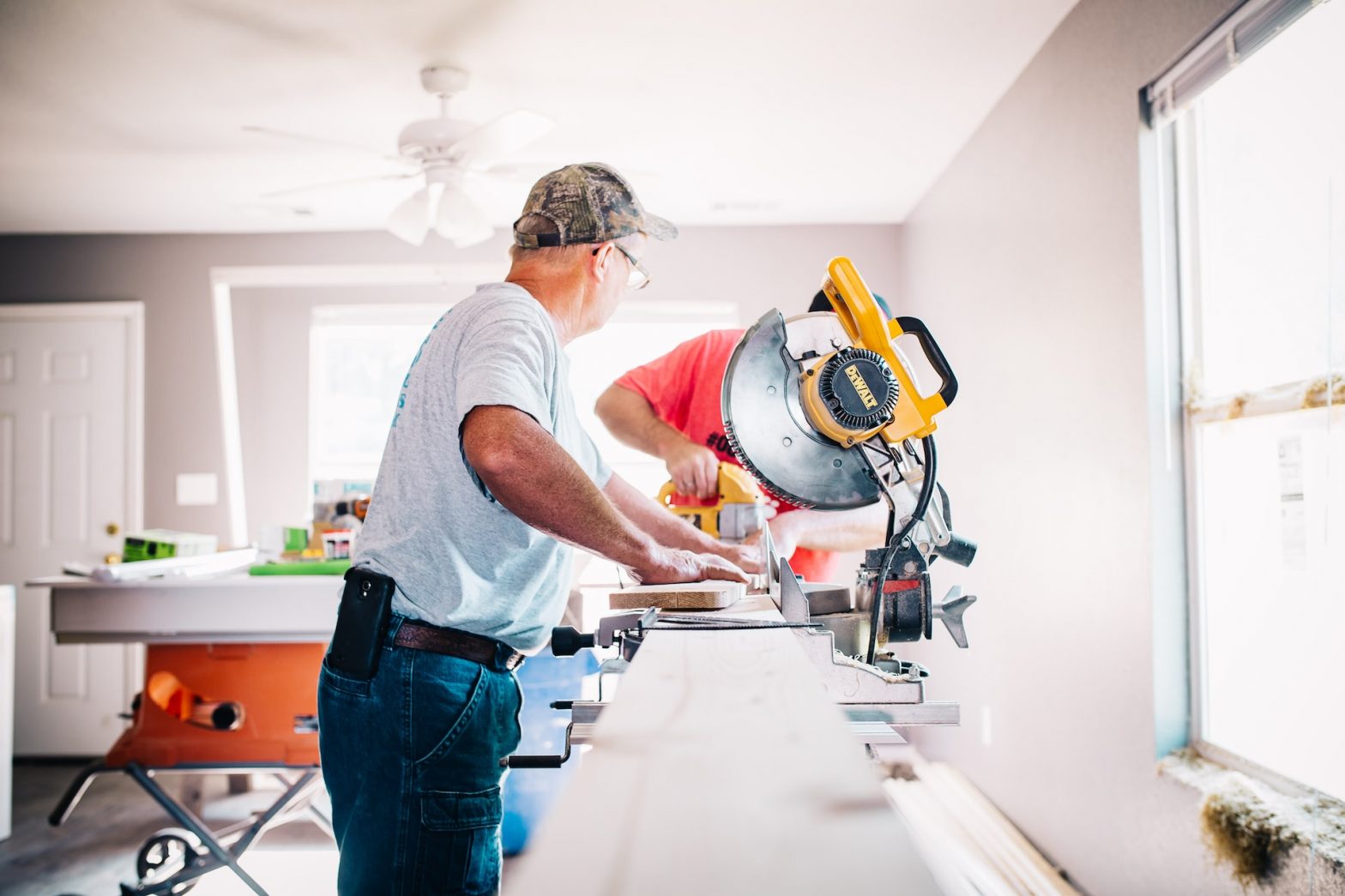There is a great deal of information on the internet about rehab loans. Many times I have clients ask me about them as an option – in fact, just yesterday, I had a client email me requesting more information about the various rehab mortgage loan options.
While there may be more options – I’ll go over the two popular options (that we also offer) and help you understand which option may be best for you.
The two main options are the FHA 203k rehab loan and FannieMae’s Homestyle Mortgage. FreddieMac also has the ChoiceRenovation loan however, we don’t see many of these in the marketplace. Also, VA also started offering a renovation loan program (we offer this too but due to the lack of requests we just don’t see many come through our pipeline).
First, what is a renovation loan?
With a renovation loan the buyer or owner of a residential home can finance the costs to renovate the home back into the mortgage. This can be with either a refinance of the current mortgage or during a purchase. The process in either case does take longer that your typical vanilla loan. I advise my clients to figure at least 60 days for closing (while we tell clients 30 days for most refinances and purchases – although I have closed a few in 8 days). The reason for the lengthy process is due to working with contractors. Even with contractors that are familiar with the rehab loan process the timeline to obtain estimates, proper paperwork, etc. adds weeks to the process.

Let’s start with the 203(k) FHA renovation loan.
The 203k is an FHA loan product backed by HUD (U.S. Department of
Housing and Urban Development).
There are 2 different types of the 203k – the Limited (formerly known as the Streamlined) and the Full 203k.
The Limited offers more of a streamlined process – repairs up to $35,000* but no structural changes (moving walls, etc.).
The Full 203k involves “unlimited” repair costs but the only exclusions are –
- No luxury items – pools, gold plated toilets, etc
- no demolition of existing foundation
Items that can be repaired or changed:
- Converting a 1-family structure to a 2-, 3-, or 4-family structure
- Decreasing an existing multi-unit structure to a 1- to 4-family structure or reconstructing a structure that has been or will be demolished, provided the complete existing foundation system is not affected and will still be used
- Repairing, reconstructing or elevating an existing foundation where the structure will not be demolished
- Purchasing an existing structure on another site, moving it onto a new foundation and repairing/renovating it
- Making structural alterations
Now, one important note of why the FHA program is a option for a savvy buyer – FHA requires only 3.5% down payment on the total cost whether it be a 1 unit or a 4 unit (must reside in one of the units as your primary). Conventional down payment requirements increase when going over 1 unit. Essentially, you could buy a 4 unit, rent out 3 units and pay the mortgage entirely while living in the one unit – thus having others pay your mortgage. I’ve helped many clients achieve this successfully.
The process involved for the full 203k when purchasing is make an offer on a home but make sure your contract closing days is out 60+ days
Once the contract is accepted that is when the clock begins.
You’ll want to obtain a HUD consultant – typically, we lenders will provide you with a list in your area or someone we have worked with in the past that did a good job.
The HUD consultant is paid upfront by the borrower/buyer. The fee is based on the complexity of the work with the highest fee of $1,000. The HUD consultant will walk the house with you telling you the items that have to be repaired to meet FHA/HUD regulations as well as discuss what you the buyer wants to be performed. The HUD Consultant will then provide the buyer an estimate of repairs and any permits required.
Sometimes the HUD consultant can do the work but typically the buyer will obtain a general contractor. The General Contractor (GC) will then also provide estimates for repairs. The repairs must match up with the HUD consultant’s write up. The estimate must break down labor and materials as well as any permit fees. The GC can then sub-contract work such as plumbing, electrical, etc that requires a permit or does not fall under the GC’s expertise.
*** Homes built prior to 1978 will require contractors to have a lead based paint certification if any painted surfaces will be disturbed. Example – if a wall is being torn down and moved – the demolition company or contractor must be lead based certified (license must be current).
Once all estimates are provided (that is the time-consuming part) the lender can now order your appraisal. The reason why we lenders have to wait is because the appraiser will provide a current as-is value as well as a value based on once the repairs/upgrades are completed. During this time, we will continue to collect necessary lending documents but also contractors’ W9s, licenses, etc. There are also a few forms that the contractor will need to complete and sign as well as the buyer.
As long as the appraisal value supports the cost of the repairs the loan can proceed. FHA allows up to 110% of the value to be used with calculating the maximum loan amount. If the value comes in too low the buyer can either renegotiate the price of the purchase, provide cash to cover the difference, reduce the cost of repairs (which may mean removing upgrades that are not required) or terminate the contract for purchase.
Reserves
FHA requires reserves to be set aside for unforeseen costs. The reserves is a percentage of the costs of the repairs up to 20% depending on the complexity (typically 10 to 15% on most rehabs).
This costs is calculated in the total loan amount. Reserves not used once work is completed will be applied to the loan’s principal.
Closing Day
Once the buyer receives the clear to close, all parties will sign as they would in a typical purchase. This is when work can begin for the contractors. the work is required to be completed within 6months barring any unforeseen holdups (weather). The contractor can request up to 50% of material costs at closing to get the project started. No labor costs will be provided. The contractor can also request draws on the repair costs as certain work milestones have been completed. The HUD consultant will need to sign off on draws.
Once all work is completed – the buyer/homeowner will need to sign off on the Final Completion. Typically, we’ll see the HUD consultant perform a final inspection as well.
Typically, we’ll see the buyer end up with instant equity.
The Limited 203k
The Limited is capped at $35,000 in repairs and no structural changes.
However, you have to account for various costs that usually brings down repair costs to the $30,000 range from what I have seen in the past. While a HUD consultant isn’t required – we do recommend having one. Everything for the Full 203k is the same except for the limitations in repair costs and work performed.
The Homestyle (FannieMae)
The Homestyle offers a bit more flexibility with parameters – such as investment properties and second homes. There are higher down payment requirements however and they are:
- First-time homebuyers can do 3% down if they qualify but 5% minimum down payment if not for a primary residence one unit
- 2 unit properties require a minimum of 15% for primary residence
- 3-4 unit properties require a minimum of 25% down for a primary residence
- 1 unit second home requires 10% down payment
- 1 unit Investment properties require a 15% minimum down payment
It is worth noting that the rates for the homestyle can increase significantly especially on 2+ units, second homes and investment properties if putting down the minimum required. Whereas FHA does not fluctuate as much and doesn’t take quite the hits to the rate based on credit score. Conventional rates are impacted by credit scores, down payment, number of units and type of ownership (investment, second home and primary residence).

While both programs (FHA and Conventional) list that borrowers can perform some of the work themselves – I have never seen it approved in my attempts.
The process is similar for the Homestyle loan where the repairs are limited to the future appraised value – however, the loan must be less than the appraised value and meet the loan to values (LTV) mentioned above with regards to down payment.
- Down payment is based on the final total costs in all loans (not the purchase price)
- A down payment is not required on refinances but the LTVs must still fall under guidelines
A HUD Consultant is not required for a Homestyle loan (although they can be used) but the Contractors must be approved with the lender. We lenders will ensure that the paper work with the contractor(s) meets guidelines.
Lenders can advance the contractor up to 50% of material costs after closing.
DID YOU KNOW?
If the work prevents the owners form residing in the property for longer than a month – the mortgage payments can be financed into the mortgage – up to 6 months with prior approval.
Contingency reserves can also be required on Homestyle loans and they are required on 2-4 unit properties. The contingency reserve is determined by the lender (up to 10%) and is financed into the loan. Funds not used are applied to paying down the principal once all repairs are completed and signed off on by borrower/owner.
Refinances – 203k and Homestyle
Refinances have to meet the same Loan to Value guidelines in each scenario however for Homestyle requires the ratio to be calulated by dividing the original loan amount by the the “as-completed” appraised value. Cash back is not permitted for the Homestyle loan.
Important notes –
For conventional mortgages – if the down payment is less than 20%, mortgage insurance (MI) is required. MI is based on a few factors – credit score, down payment percentage, type of property, location, and number of borrowers on the loan – whereas FHA is a flat rate of .85% no matter credit score, etc. However, the MI does drop down to .80% if there is a 10% down payment or more. Frankly, I would advise saving your cash (if you can’t go the conventional route) as the difference isn’t that great.
Most people may choose to refinance the mortgage after 6 payments. As I type this (Jan 2023), rates are the highest they have been in quite some time. The general consensus is that rates will come down a bit Q4 of 2023. Some may choose to refinance whether to get out of an FHA loan, or just lower the rate once rates come down or they have built equity in the home. I’ve had clients that completed the rehab loan process and later that year refinance because they built 30% equity in the home due to the renovation.
If you have more questions – I’m always available via email, text or phone.
Joe Longobardi
jlongobardi@vandykmortgage.com
or by text 410.960.7639
